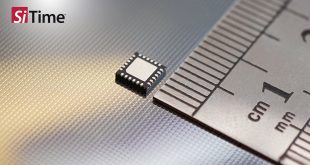Gas Sensing Solutions (GSS) is helping to solve a challenge with laboratory incubator applications. Incubators are typically used to grow bacteria and micro-organisms, and to culture cells and tissues for research and clinical purposes. The incubator’s job is to help mimic a cell’s natural environment and provide stable conditions for safe, reliable study. Incubators typically only measure up to around five per cent CO2 concentration levels, but some researchers need to have concentrations of up to 20 per cent CO2 or higher. GSS CO2 sensors are therefore being used to monitor and control the incubator atmosphere as they can measure concentrations up 100 per cent.
 Having stable CO2 control was rated as the top feature when purchasing a CO2 incubator according to a recent survey by Lab Manager. Stability is therefore an important requirement for a CO2 sensor in order to maintain the integrity of research and experiments in incubator applications.
Having stable CO2 control was rated as the top feature when purchasing a CO2 incubator according to a recent survey by Lab Manager. Stability is therefore an important requirement for a CO2 sensor in order to maintain the integrity of research and experiments in incubator applications.
GSS CO2 sensors are manufactured in-house using proprietary mid-infrared LEDs as the core technology. This solid-state platform provides the durability needed to consistently measure CO2 in the incubator environment. In addition, because the sensors use LED technology, they generate minimal heat when taking CO2 measurements. This has the added benefit of not altering the environment inside the incubator, which could potentially affect the research or experiment being carried out. By contrast, alternative CO2 sensor designs have to heat up a source of infrared every time they take a measurement, which may need to be accounted for in the incubator.
The ExplorIR range of sensors are available in three measurement ranges of 0-5 per cent, 0-20 per cent and 0-100 per cent to ensure an optimal fit with the environment being measured. Specifically, the ExplorIR-W sensor operates at a temperature range of 0º to 50ºC, but is also available with extended temperature range from -25°C to 55°C to suit diverse applications. The sensor is easy to set up with a UART interface over four pins. A technical datasheet with drawings is available on the GSS website.
GSS technology
CO2 sensors work by measuring how much light is absorbed by CO2 molecules in the 4.2 and 4.4 microns range as it passes through the sample gases, which is called Non-Dispersive Infra Red (NDIR) absorption. The amount of absorption indicates how much CO2 is present. GSS developed proprietary LEDs that are specifically tuned to emit at these wavelengths. The LEDs use very little power and turn on almost instantly, enabling sensor readings to be made in less than a second. As a result, GSS has pioneered the development of CO2 sensors that can be powered by batteries for long periods of up to ten years. Competitor sensors use IR sources that require significantly more power per measurement and also take much longer to reach a stable condition for a measurement, resulting in the need for mains power.
 CIE Components in Electronics
CIE Components in Electronics



